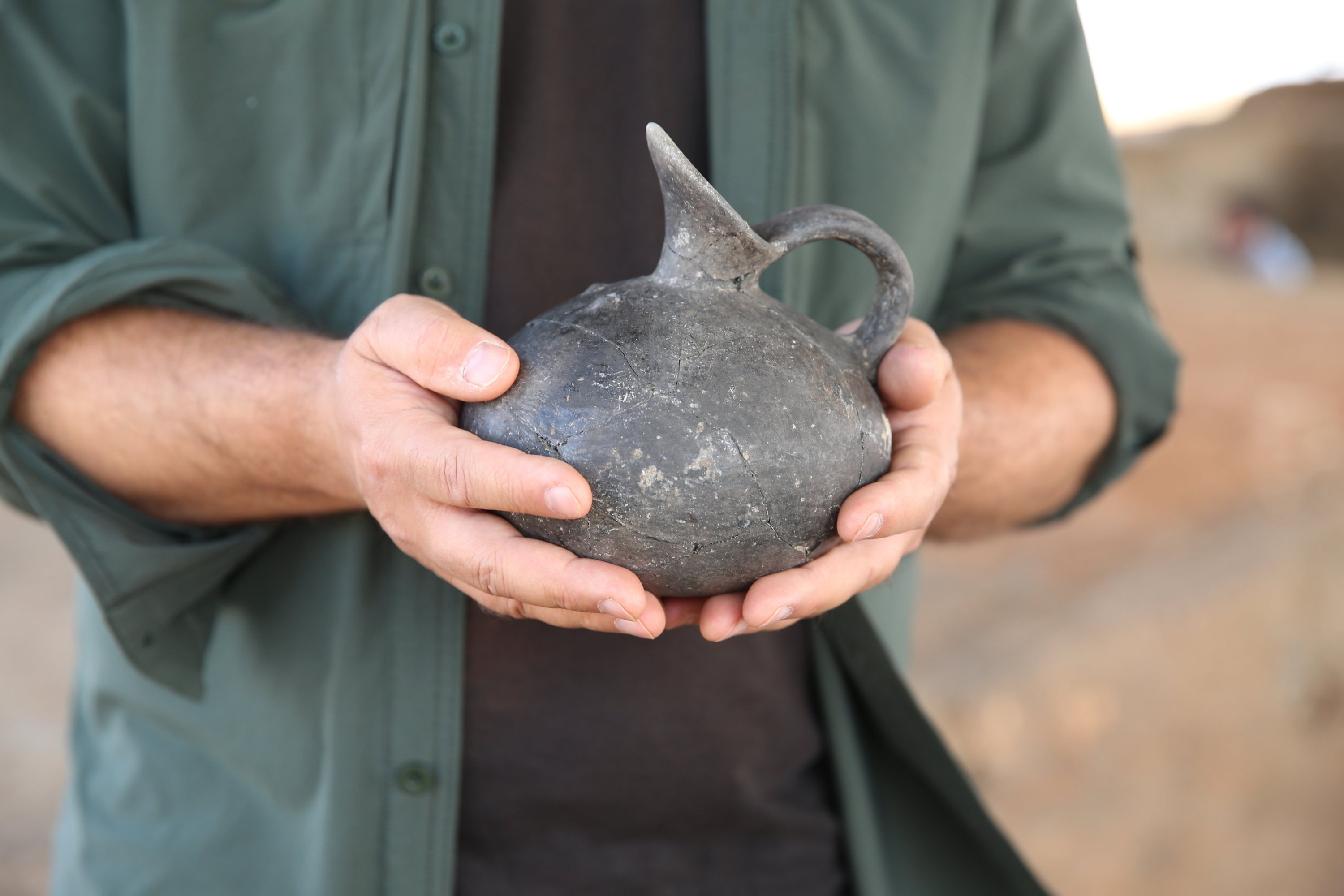© Turkuvaz Haberleşme ve Yayıncılık 2024
Archaeological excavations at the Küllüoba Mound in Eskişehir's Seyitgazi district, ongoing since 1996, have uncovered findings related to the "structure burial" cult, typically associated with the Neolithic period of southeastern Anatolia.
The ongoing efforts to uncover the history of the region, which saw continuous settlement for 1,250 years during the Bronze Age between 3200 and 1950 B.C., are being conducted by a team of 15 led by professor Murat Türkteki, a faculty member in the Archaeology Department at Bilecik Şeyh Edebali University. These efforts are carried out with the permission of the Directorate General of Cultural Heritage and Museums.
At the mound, located 15 kilometers (9 miles) northeast of the district center, archaeologists are searching for traces of the Bronze Age with the support of the Ministry of Culture and Tourism, Eskişehir Metropolitan Municipality, Odunpazarı Municipality, Eskişehir Chamber of Commerce, Eskişehir Chamber of Industry and a sponsoring company.
During this year's work, which began in mid-July, the most significant finding was encountered in 5,200-year-old structures from the Early Bronze Age on the western side of the mound. Experts discovered that after being completely emptied and cleaned, the houses and elements within them, such as hearths, ash pits and silos, were buried under a red-colored sterile soil (caliche). The silos, made of fragile mud, were also deliberately preserved intact under the soil.

Additionally, archaeologists uncovered sheep and goat vertebrae between the stones filling the doors and windows, indicating a sacrificial ritual. They speculate that the placement of a single shiny black beaked pitcher, thrown into the thoroughly cleaned structure to be broken, might also be part of this ritual.
Türkteki told Anadolu Agency (AA) that the area they excavated this year dates back to 3200-3000 B.C. and is the oldest settlement area in the region.
Providing insights into the structure burial findings, Türkteki stated: "We found that the back rooms of all the structures were deliberately buried under red sterile soil, preserving the walls up to 2.5-3 meters. Normally, only foundations remain in mounds, but here the walls are almost intact up to the roof. Before burial, doors and ventilation areas were sealed with stones, likely as part of a ceremony. Parts of sacrificial animals were placed in the sealed areas, and a ceremonial vessel was thrown into the structure, leaving it empty except for the hearth and silo," he explained.
Türkteki noted that this method is intriguing and has occasionally been observed in examples from the Neolithic and Chalcolithic periods in southeastern and central Anatolia.
"We were unaware of such a practice in the Bronze Age until now," said Türkteki, emphasizing that this is a significant development for the archaeological community.
Türkteki also highlighted the curious continuity of this tradition in this western region of Anatolia thousands of years later: "In the southeastern Anatolian Neolithic period, special structures were buried, indicating a burial ritual. Although social memory spans thousands of years, the purpose here might be different, given the 7,000-year gap between the periods. The practice seems similar, but the intent could vary. The structures we found are residential with two rooms each. While there is a clear ceremonial aspect, the main purpose remains unclear. For example, just one structure contains 36 cubic meters of soil."
"This requires a large workforce and a collective effort. There is an organizational aspect, but why was this done? Was there a threat? A geographical threat, a climatic threat or some other physical threat? Our work on this matter continues," he added.
Türkteki pointed out that in the structure samples they have excavated so far, the placement of the hearth, silo, and areas used for storing vessels consistently follows the same pattern.
He explained that while the building and use of the houses remained unchanged, the back sections were buried, the doors were closed and life continued in the front sections. "So far, we have identified eight buried structures. We can say that they are arranged on a circular axis, very close to the surface. There are rectangular structures. They are positioned vertically and horizontally but continue to be arranged in a circular axis. When we complete this circle, we can preliminarily say that we are talking about a settlement with a diameter of at least 100 meters. At this stage, this is actually the earliest settlement of this mound," he said.
Türkteki pointed out that the period of 3300-3000 B.C. was a special time for Anatolia, adding: "Because for the first time, settlements began to appear on the plains during this period. This shows us that, climatically, a favorable environment for agriculture was created during this time. These settlements emerged suddenly in large numbers. In Eskişehir, for instance, nearly 200 settlement areas were established during this period. This means that there was a rapid influx of population from various regions to this area."
